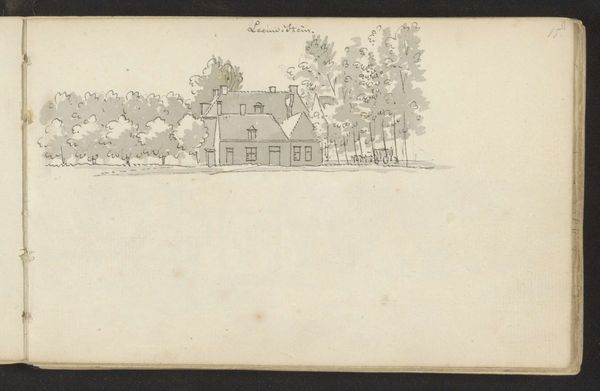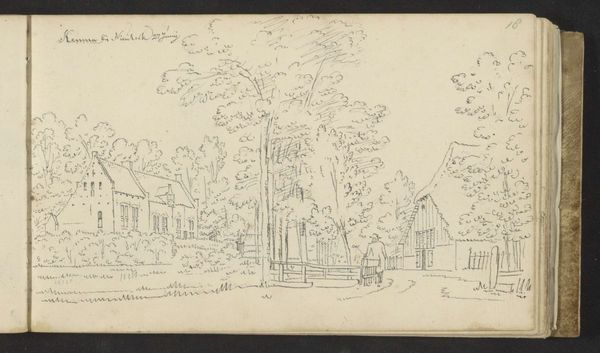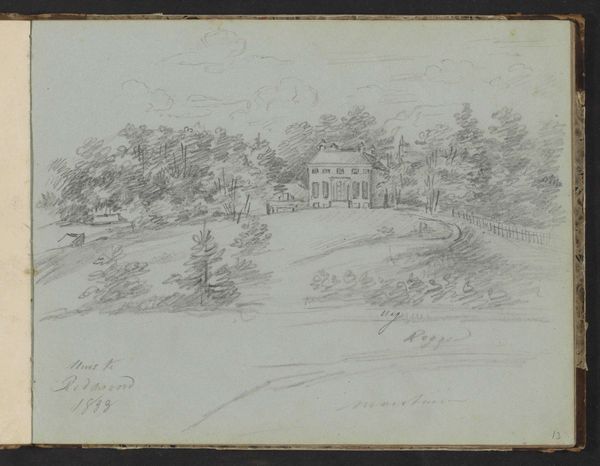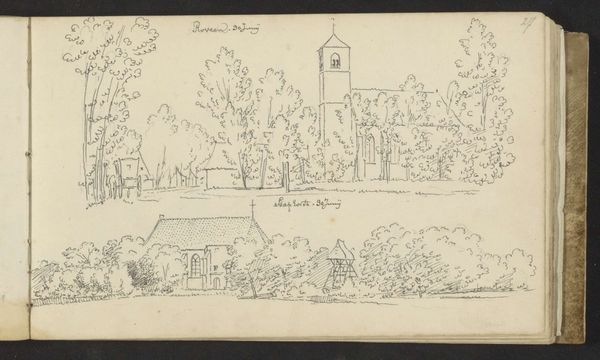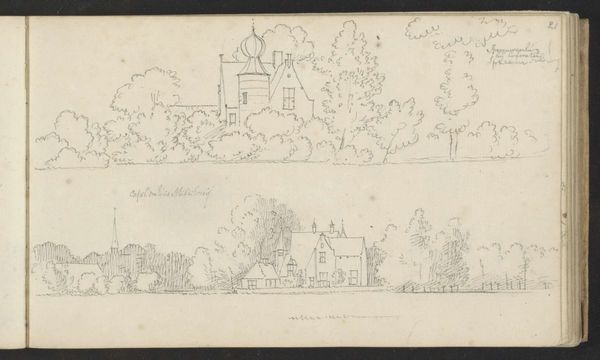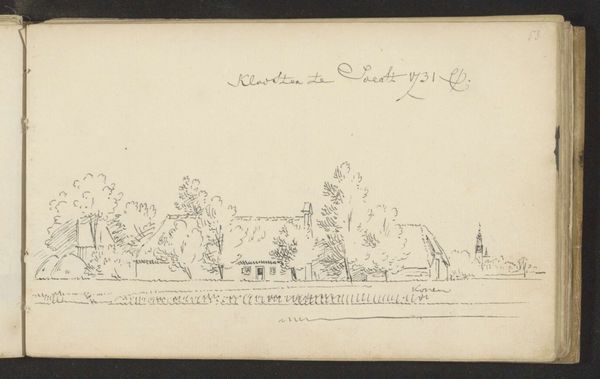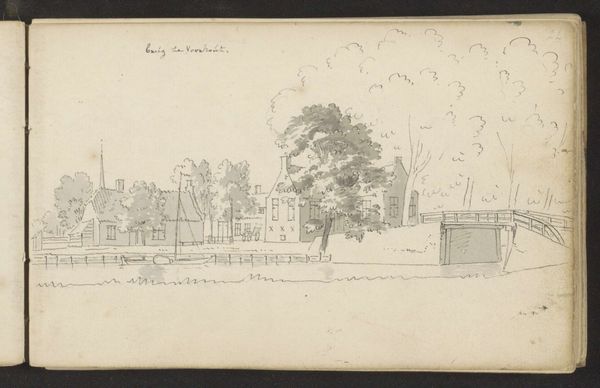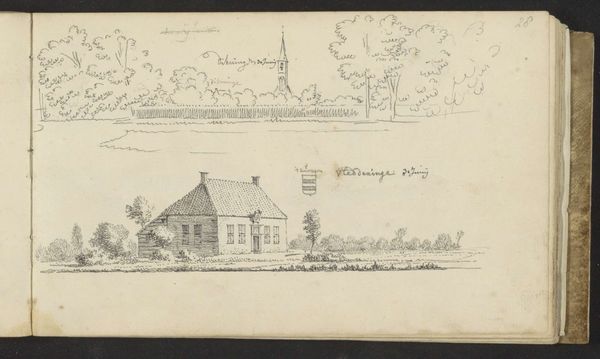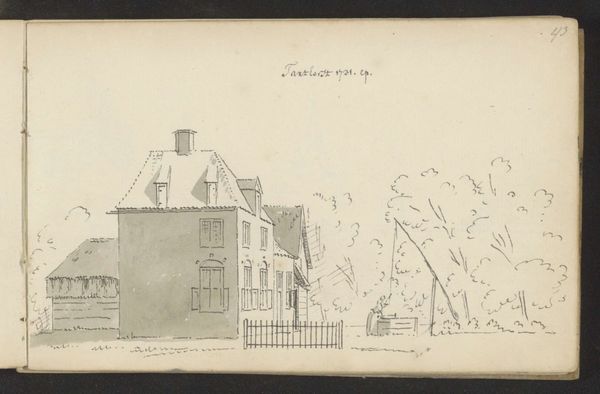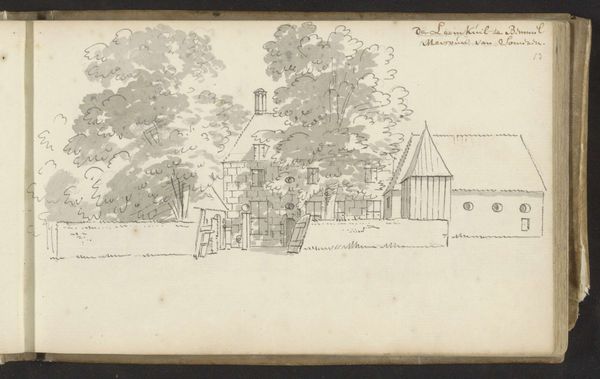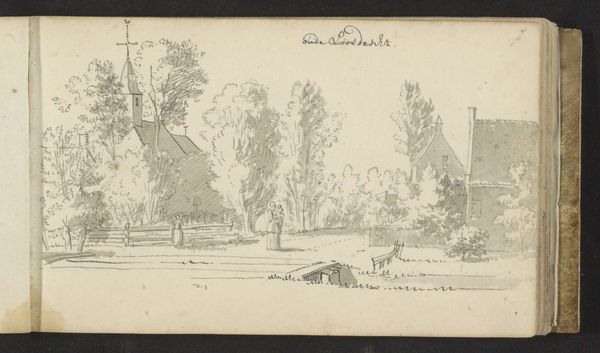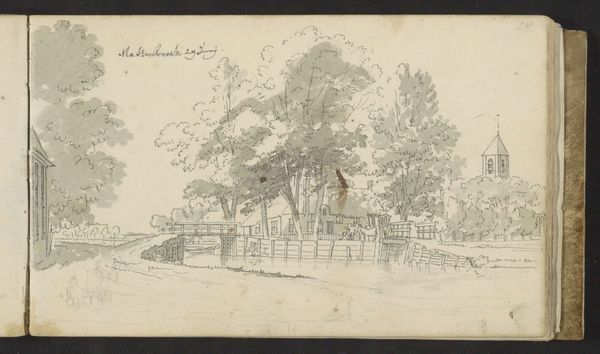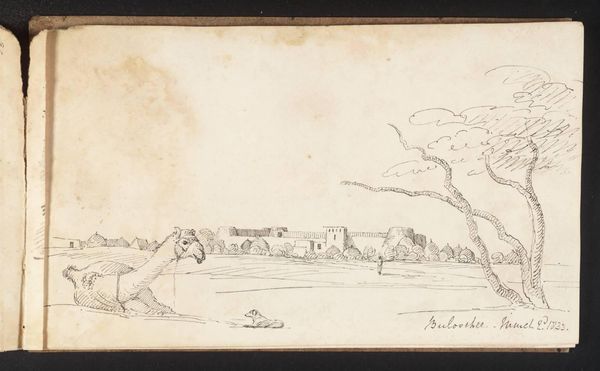
drawing, paper, ink
#
drawing
#
landscape
#
paper
#
ink
#
genre-painting
Copyright: Rijks Museum: Open Domain
Curator: Here we have a drawing attributed to Cornelis Pronk, likely made sometime between 1701 and 1759, titled “Bouwwerk te Maasbommel.” It’s done in ink on paper and currently resides here at the Rijksmuseum. Editor: My initial impression is one of quiet domesticity. The scene is simple, rendered in muted tones. It feels like a captured moment, unassuming, yet somehow…endearing. Curator: For me, the most interesting aspect is how the artist employs line and wash to depict a commonplace structure. The strokes are quite economical, but they efficiently define form and suggest material—note the variations in ink density giving texture to the roofs and trees. Consider also the social context here; is this a commission meant to document this building or reflect a form of leisure in consuming landscape views? Editor: I find it compelling how the architecture seems organically integrated with its natural surroundings. You mentioned commissioning; the positioning definitely reads as idealized and bucolic. We must remember the fraught landscape of Dutch colonialism during this era and the cultural appropriation that underpinned a longing for simplicity that often masked violent power dynamics in the colonies. Curator: Exactly, and the medium reinforces this reading: paper as a commodity from particular production sites, and the skilled labor required to render it – these contribute to the narrative of how such views become not only aesthetically pleasing but also culturally loaded objects. The work's composition and placement speak volumes about its economic and societal function. Editor: The seemingly 'naive' rendering might intentionally evoke a sense of authenticity and innocence. Was this circulated as part of larger commentary regarding society? Could the portrayal of daily life itself been subversive during periods of conflict? And of course, who was this intended audience? These visuals normalized particular social frameworks; it speaks to art's role in cultural reinforcement. Curator: I’d add that examining similar drawings in Pronk's catalog reveals that these "genre paintings" were often preparatory studies, intended for larger, more elaborate projects… mass production that might speak to expanding commercial opportunities during that era. This detail provides context in which this piece functioned within an elaborate artistic enterprise and labor structure. Editor: Considering the themes we have identified allows us to scrutinize what role images like this assumed across political and gendered boundaries – questioning notions surrounding national and individual identity during this period. Thanks to this dialogue, what initially struck me as picturesque gains more complex political undercurrents. Curator: Yes, from analyzing materials to considering social and political histories, one understands the deep significance embedded even within what appears like the most understated scene.
Comments
No comments
Be the first to comment and join the conversation on the ultimate creative platform.
